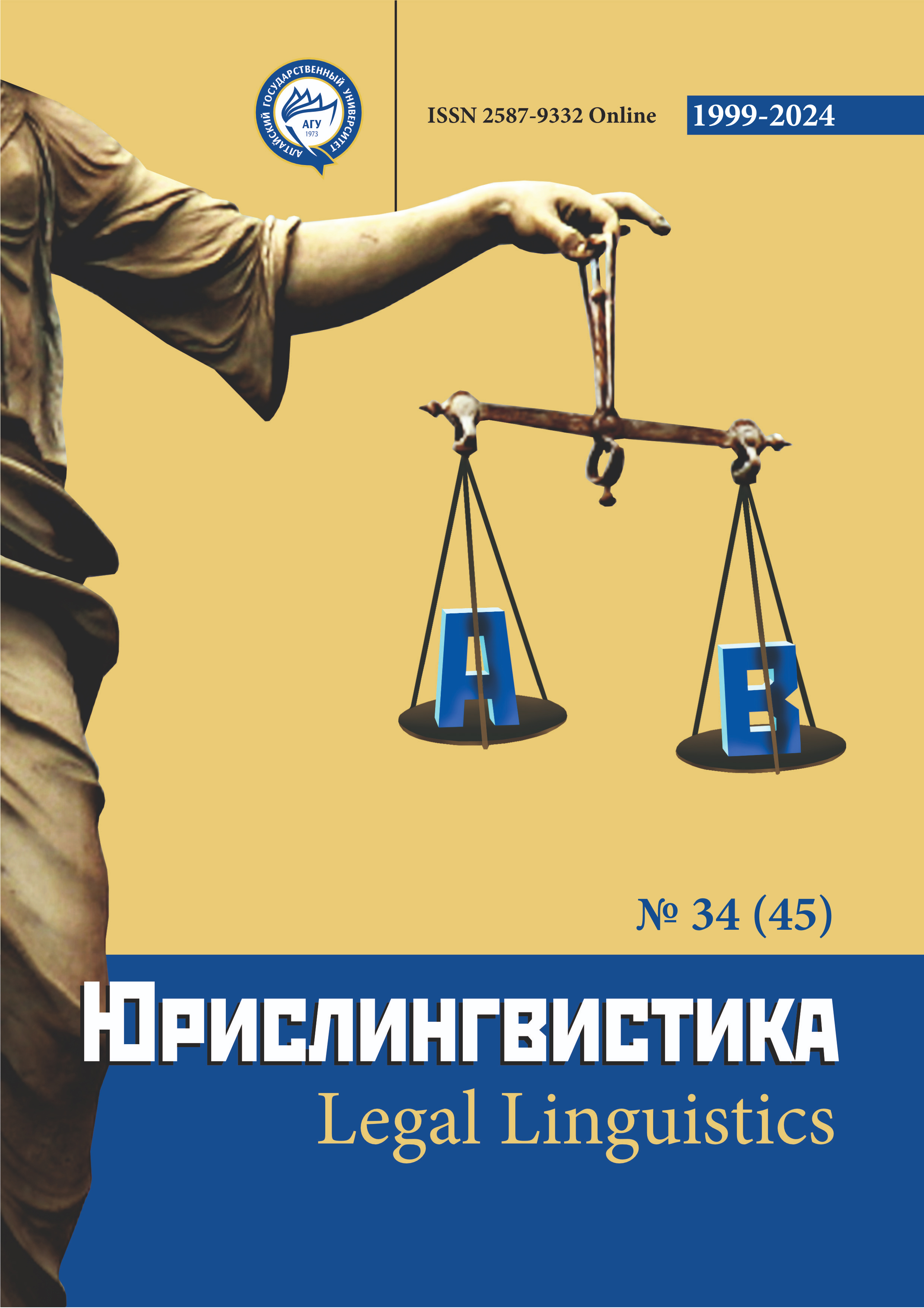The Use of Digital Platforms as a Technological Basis for the Formation of Criminal Communities Ecosystems
УДК 343.98, ББК 67.4
Abstract
The article discusses issues related to the formation of digital platforms created by organized groups and criminal communities. It notes that such digital platforms operate on the Darknet, a shadow segment of the Internet that provides increased user anonymization through the use of specialized software tools and technologies. The important role of digital platforms in the development of new forms of organized criminal activity, based on network principles of management and interaction within social groups, is highlighted. The significant criminal advantages provided by the use of digital platforms in the commission of high-tech crimes—specifically, the use of specially created computer tools for remote access to objects of criminal encroachment by criminal groups—are analyzed. Based on the proposed conceptual framework, a qualitatively new phenomenon has been identified and described: the creation of ecosystems of criminal communities based on digital platforms. These ecosystems are network associations of separate autonomous criminal groups with different specializations, interacting with each other through information and telecommunication networks, while digital platforms serve as the technological foundation for the functioning of these ecosystems. The article considers the most significant factors that ensure a higher criminal efficiency of these ecosystems in implementing high-tech criminal activities compared to organized criminal groups with a traditional vertical hierarchical structure, as well as similar criminal groups with a network management structure. Finally, it describes the connection between the emerging ecosystems of criminal communities and the phenomena of globalization, expressed in the transnational nature of high-tech criminal activity, as well as the processes of glocalization of crime that have manifested in recent years.
Downloads
Metrics
References
Безвершенко Л., Галов Д., Квятковский И. Шифровальщики: кто, как и зачем использует их в 2021 году. URL: https://securelist.ru/ransomware-world-in-2021/101425/
Бычков В. В., Вехов В. Б. Некоторые аспекты противодействия преступлениям экстремистской направленности, совершенным с использованием даркнет / Расследование преступлений: проблемы и пути их решения. – 2023. – № 2. – С. 89–94. DOI: 10.54217/2411-1627.2023.40.2.010.
Васильев А. А., Ибрагимов Ж. И., Васильева О. В. Даркнет как ускользающая сфера правового регулирования / Юрислингвистика. – 2019. – № 12. С. 10-12.
Глазкова Л. В. Особенности современных организованных преступных групп / Мониторинг правоприменения. – 2019. – №1 (30). – С. 54-60.
Зайцев О. А., Пастухов П. С. Цифровой профиль лица как элемент информационно-технологической стратегии расследования преступлений / Вестник Пермского университета. Юридические науки. – 2022. Вып. 56. – C. 281–308. DOI: 10.17072/1995-4190-2022-56-281-308.
Зорькин В. Д. Проблемы конституционно-правового развития России (к 20-летию Конституции Российской Федерации / Вестник Московского университета. Сер. 11. Право. – 2014. – № 1. – С. 3-21.
Каминский А. М. Теоретические основы криминалистического анализа организованности преступной деятельности и возможности его практического использования: автореф. дисс. д-ра юрид. наук. Нижний Новгород, 2008.
Кастельс М. Становление общества сетевых структур / Новая постиндустриальная волна на Западе. Антология / под ред. В. Л. Иноземцева. М., 1999. - С. 494-505.
Коновалова Е. А., Есина А. С. Сравнительно-правовой анализ категории «организованная преступная группа» / Вестник Московского университета МВД России. – 2021. – № 6. – С. 161‒165. DOI: 10.24412/2073-0454-2021-6-161-165.
Овчинский В. С. Криминология цифрового мира : учебник для магистратуры. М., 2018.
Осипенко А. Л. Организованная преступность в сети Интернет / Вестник Воронежского института МВД России. – 2012. – № 3. – С. 10-16.
Осипенко А. Л. Сетевая компьютерная преступность: теория и практика борьбы: монография. Омск, 2009.
Поляков В. В. Групповая форма совершения преступлений как один из признаков высокотехнологичной преступности / Российский юридический журнал. – 2023. – № 1 (148). – С. 117-126. DOI: 10.34076/20713797_2023_1_117.
Поляков В. В. К вопросу о противодействии высокотехнологичной транснациональной преступности / Сб. мат. Междунар. науч.-практич. конф. «Актуальные проблемы отечественной криминалистики: современные тенденции», посвященной памяти проф. Н. П. Яблокова. 16 декабря 2022 г., г. Москва. М., 2023. – C. 367-374.
Поляков В. В. Структура и содержание криминалистической характеристики высокотехнологичных преступлений / Актуальные проблемы российского права. – 2024. – № 6. – С. 147-159. DOI: 10.17803/1994-1471.2024.164.7.147-159.
Поляков В. В. Понятие «высокотехнологичные преступления» в криминалистике / Криминалистика: вчера, сегодня, завтра. – 2023. – № 4. – С. 151-162. DOI: 10.55001/2587-9820.2023.19.44.015.
Протасевич А. А., Скрябикова Ю. Б. О необходимости формирования единой дефиниции «даркнет» в криминалистике / Сибирские уголовно-процессуальные и криминалистические чтения. – 2021. – № 4. – С. 77–86. DOI: 10.17150/2411-6122.2021.4.77-86.
Раменская Л. А. Применение концепции экосистем в экономико-управленческих исследованиях / Управленец. – 2020. – Т. 11, № 4. – С. 16-27.
Савенков А. Н., Россинская Е. Р. Вектор развития криминалистической науки в условиях глобальной цифровизации / Государство и право. – 2023. – № 5. C. 100-110. URL: http://gospravo-journal.ru/s102694520025650-6-1/. DOI: 10.31857/S102694520025650-6.
Сидоренко Э. Л., Барциц И. Н., Хисамова З. И. Эффективность цифрового государственного управления: теоретические и прикладные аспекты / Вопросы государственного и муниципального управления. – 2019. – № 2. – С. 93-114.
Смушкин А. Б. Криминалистические аспекты исследования даркнета в целях расследования преступлений / Актуальные проблемы российского права. – 2022. – Т. 17, № 3. – С. 102-111. DOI: 10.17803/1994-1471.2022.136.3.102-111.
Хабриева Т. Я. Право перед вызовами цифровой реальности / Журнал российского права. – 2018. – № 9. – С. 5–16. DOI: 10.12737/art_2018_9_1
Beshiri A. S., Susuri A. Dark Web and Its Impact in Online Anonymity and Privacy: A Critical Analysis and Review / Journal of Computer and Communications. 2019. Vol.7. No. 3. Р. 30-43. DOI: 10.4236/jcc.2019.73004.
Van Hellemont E., Densley J. Gang glocalization: How a global mediascape creates and shapes local gang realities / Crime, Media, Culture: An International Journal. 2019. Vol. 15. Issue 1. Р. 1-20. DOI: 10.1177/1741659018760107.
Copyright (c) 2024 Виталий Поляков

This work is licensed under a Creative Commons Attribution 4.0 International License.
The authors, which are published in this journal, agree to the following conditions:
1. Authors retain the copyright to the work and transfer to the journal the right of the first publication along with the work, at the same time licensing it under the terms of the Creative Commons Attribution License, which allows others to distribute this work with the obligatory indication of the authorship of this work and a link to the original publication in this journal .
2. The authors retain the right to enter into separate, additional contractual agreements for the non-exclusive distribution of the version of the work published by this journal (for example, to place it in the university depository or to publish it in a book), with reference to the original publication in this journal.
3. Authors are allowed to post their work on the Internet (for example, in a university repository or on their personal website) before and during the review process of this journal, as this may lead to a productive discussion, as well as more links to this published work (See The Effect of Open Access).











